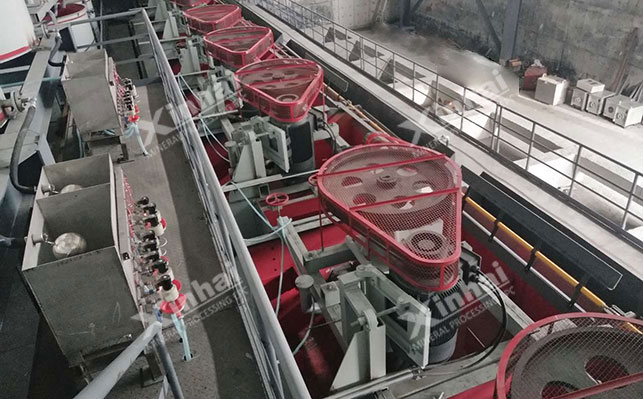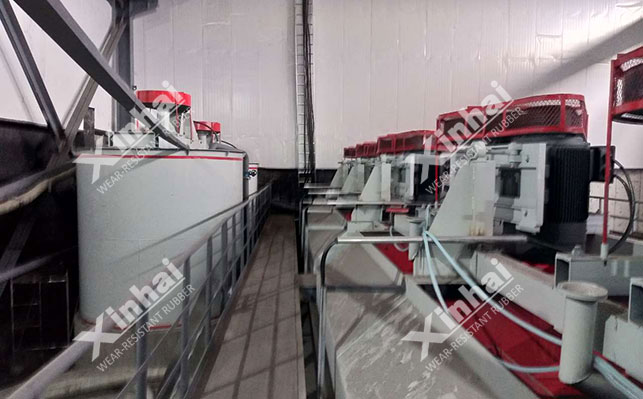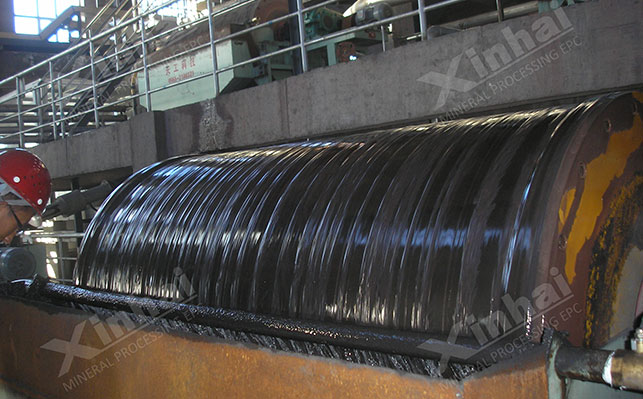
Flotation is one of the common methods of hematite beneficiation. Compared with other beneficiation methods, flotation can effectively extract high-quality iron ore from fine-grained materials, thus providing high-quality raw materials for steel production.
Positive flotation, reverse flotation, forward-reverse flotation process, magnetic separation-reverse flotation, strong magnetic separation-flotation process.

15311826613
Click to add WeChatThe hematite flotation process is to adjust the pH of the slurry in the range of 9 to 11, using fatty acid anions as collectors and sodium carbonate as adjusters. Agent for flotation of hematite minerals in hematite quartzite ores. Commonly used collectors include soybean oil fatty acid sulfated soap, oxidized paraffin soap, crude tar oil, third-line alkali residue, chlorinated acid, oxidized kerosene, sodium sulfonate, corn flour, etc. The flotation methods are mainly forward flotation process, reverse flotation process and forward and reverse flotation process.
The hematite positive flotation process uses anionic collectors to float out iron minerals from the raw ore and retain gangue minerals. In the slurry of the flotation cell, the tailings can be discarded under coarser particle size conditions without desliming. Commonly used collectors are fatty acids or hydrocarbon sulfate esters and petroleum sulfonates.

The flotation process is simple to use, has low processing cost, and is suitable for single processing The hematite ore has great advantages. However, it requires multiple selections to obtain qualified hematite concentrate, and the foam is easily sticky, making the product difficult to concentrate and filter.
In addition, there are great limitations in the selection of collectors, and it is difficult to increase the grade of iron concentrate to above 65%. Combined with the limitations of the properties of the iron ore itself, positive flotation is rarely used.
Hematite reverse flotation uses anionic or cationic collectors to float gangue minerals from the raw ore and convert the iron minerals into remain in the flotation tank.

Anion collector: Mainly use fatty acid collector for reverse flotation after activation of calcium ions. Sodium hydroxide or sodium hydroxide is mixed with sodium carbonate to adjust the pH to above 11, and starch, sulfonated lignin and dextrin are used to inhibit iron minerals and achieve reverse flotation. This method is suitable for the flotation of iron ore with higher grade and easier to float gangue.
Cationic collector: Mainly use sodium carbonate to adjust the pH of the slurry to 8~9, use starch, dextrin, tannin, etc. to inhibit iron minerals, and use amine For flotation of quartz gangue using similar collectors, ether amines are the first choice as collectors, followed by fatty amines.
Cationic collector reverse flotation can be carried out under coarse grinding conditions. As long as the slurry reaches monomer dissociation, the amine collector can well float out the monomer quartz. , more suitable for flotation of high-grade iron ore with complex composition.
Hematite forward and reverse flotation is to first carry out forward flotation of the slurry, scrape out the hematite concentrate foam and then It is fed to another flotation machine for reverse flotation, and finally the hematite concentrate is enriched in the reverse flotation flotation tank. The commonly used collector is dodecaamine.
This flotation process separates hematite and can greatly improve the flotation index of hematite ore. However, the method is cumbersome and requires a large amount of pharmaceuticals.
The magnetic separation-reverse flotation process is to first The iron minerals are magnetically separated to separate out hematite. The remaining minerals use dodecylamine cations as collectors and are reverse-flotated in neutral pulp (the pH of the pulp is 7), which can effectively improve the quality of the iron concentrate. .

Relevant data show that when the dosage of dodecylamine is in the range of 120~180g/t, all mineral processing indicators are good, and the iron concentrate The ore grade can reach about 70%, and the recovery rate can reach more than 75%.
The strong magnetic separation-flotation process is to coarsely grind the hematite and then undergo high-intensity magnetic separation to remove the coarse particles in the ore. Gangue minerals such as monolithic quartz and easy-to-sludge chlorite are selected (qualified tailings), and then finely ground and flotated.